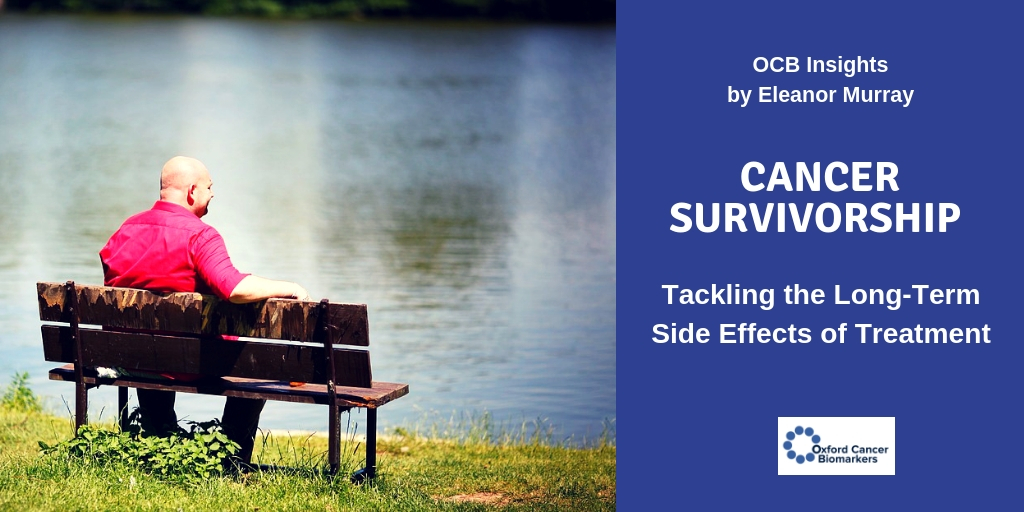
One in two of us will be diagnosed with some form of cancer in our lives.
The good news is that more people than ever before are living with and beyond that diagnosis.
The timeline of cancer has changed dramatically since the introduction of the first anti-cancer drugs in the 1940s [Kort et al, 2009]. Survival rates have improved significantly and now we have large communities of cancer survivors. There is, therefore, a demand for healthcare professionals, health organisations and members of the public to address the way we think about cancer treatment and survivorship. As a medical student and intern with Oxford Cancer Biomarkers (OCB), it is a priority for me to improve my understanding of the wider impacts of a cancer diagnosis.
How chemotherapy affects the body
The long-term effects of cancer and its treatments can be significant and wide-reaching. 28% of people diagnosed with cancer will be treated with curative or palliative chemotherapy. Chemotherapy often works by targeting cells that divide rapidly – this includes cancer cells but also some healthy cells like the ones in the roots of our hair. This is why people being treated with chemotherapy can lose hair not only from their head, but also the rest of their bodies. Patients often report losing their hair as one of the most shocking moments in their cancer journey.
Other cells that naturally divide quickly are cells of haematopoietic origin (i.e., the cells in our bone marrow that become our blood cells). The most common white blood cell in our bodies is the neutrophil.

This is why, when patients lose their white blood cells due to chemotherapy they are said to be ‘neutropenic.’ Neutropenia can be very dangerous as it makes patients much more susceptible to infections. For this reason, it’s important for every patient receiving chemotherapy to be highly vigilant of infections and fevers.
In addition to this, it is also possible that chemotherapy and radiotherapy themselves are the cause of a brand-new malignancy. This is because both work by introducing mutations to the cancer cells that cause them to die. Unfortunately, in rare cases, these mutations occur in healthy cells and may cause a second cancer. I imagine understanding this risk makes accepting the often harsh treatments for cancer all the more difficult.
For those who haven’t been through the experience, it’s hard to fully grasp the anxiety that must accompany this necessary heightened awareness of one’s own health. A patient once told me that this new understanding of her own mortality gave her a health anxiety that hadn’t been there before, but was now beginning to dominate her life. As a medical student, this was the first time that I had considered the psychological impact of chemotherapy.
Improving Patient Outcomes in Colorectal Cancer
OCB’s primary goal is to improve patient outcomes in colorectal cancer. One of the ways to do this is by personalising the chemotherapy journey. Using biomarker assays to predict the patient’s likelihood of toxicity allows the clinician to make the most informed decision on the correct dose of chemotherapy for their patient.
Not only does this reduce the risk of treatment-related morbidity and mortality, but by offering the patient the right solution for them at the right time, this puts patients back in the drivers’ seat.
The first rule of medicine is to do no harm. Prescribing chemotherapy could, therefore, constitute an uncomfortable paradox to any physician. By pioneering a movement away from a ‘one-size-fits-all’ approach to chemotherapy, OCB is supporting oncologists in this decision making process and changing the way we think about precision medicine.
About The Author
Eleanor Murray is a 2nd-year medical student at the University of Sheffield and intern at OCB. She is passionate about patient care.
Contact
Oxford Cancer Biomarkers Ltd
Tel: +44 1865 784743